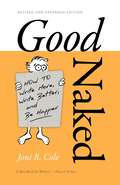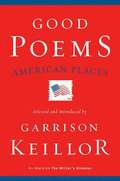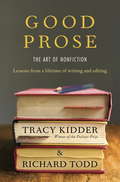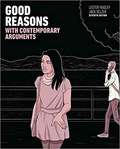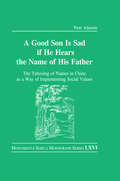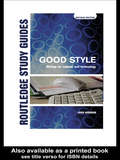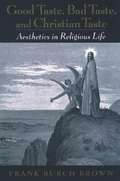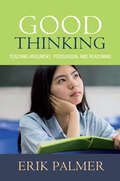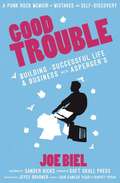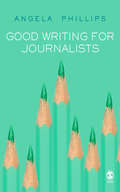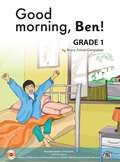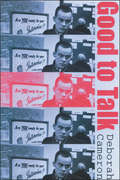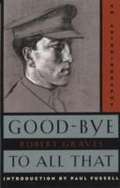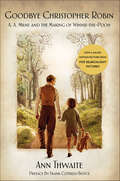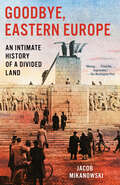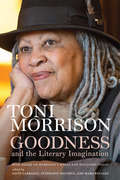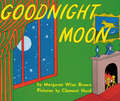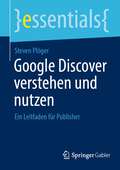- Table View
- List View
Good Habits Great Readers: Student Reader Volume 1
by Celebration PressThis Celebration Press Reading Good Habits Great Readers Student Reader-Volume 1 is for 4th grade students.
Good Habits Great Readers: Student Reader Volume 2
by Celebration PressThis Celebration Press Reading Good Habits Great Readers Student Reader-Volume 2 is for 4th grade students.
Good Naked: How to Write More, Write Better, and Be Happier. Revised and Expanded Edition.
by Joni B. ColeFrom veteran teacher and acclaimed author Joni B. Cole comes the revised and expanded edition of her popular writing guide Good Naked. Once again, Cole&’s humor and wisdom shine through as she debunks long-held misconceptions of how we&’re supposed to write, replacing them with advice that works. Feeling overwhelmed? Having trouble getting started or staying motivated? In this edition, Cole offers more stories, strategies, tips on craft, and exercises to serve new and seasoned writers from the first draft to the final edit. Writers will even find help making peace with rejection.Admirers as well as newcomers to Cole&’s work appreciate her uniquely cheerful approach, time tested to foster creativity and productivity. Keeping this generous and essential guide close by will provide a jump start to inspiration and a daily reminder of the meaning, humor, and happiness that can be discovered in your own writing life.
Good Poems, American Places
by Various Garrison KeillorP> Another wonderful poetry anthology from Garrison Keillor-rooted in the American landscape. Greatness comes in many forms, and as Garrison Keillor demonstrates daily on The Writer's Almanac, the most affecting poems in the canon are in plain English. Third in Keillor's series of anthologies, Good Poems, American Places brings together poems that celebrate the geography and culture that bind us together as a nation. Think of these poems as postcards from the road, by poets who've gotten carried away by a particular place-a town in Kansas, a kitchen window in Nantucket, a Manhattan street, a farm in western Minnesota. Featuring famous poets and brash unknowns alike, the verses in this exhilarating collection prove that the heart can be exalted anywhere in America.
Good Prose
by Tracy Kidder Richard ToddGood Prose is an inspiring book about writing--about the creation of good prose--and the record of a warm and productive literary friendship. The story begins in 1973, in the offices of The Atlantic Monthly, in Boston, where a young freelance writer named Tracy Kidder came looking for an assignment. Richard Todd was the editor who encouraged him. From that article grew a lifelong association. Before long, Kidder's The Soul of a New Machine, the first book the two worked on together, had won the Pulitzer Prize. It was a heady moment, but for Kidder and Todd it was only the beginning of an education in the art of nonfiction. Good Prose explores three major nonfiction forms: narratives, essays, and memoirs. Kidder and Todd draw candidly, sometimes comically, on their own experience--their mistakes as well as accomplishments--to demonstrate the pragmatic ways in which creative problems get solved. They also turn to the works of a wide range of writers, novelists as well as nonfiction writers, for models and instruction. They talk about narrative strategies (and about how to find a story, sometimes in surprising places), about the ethical challenges of nonfiction, and about the realities of making a living as a writer. They offer some tart and emphatic opinions on the current state of language. And they take a clear stand against playing loose with the facts. Their advice is always grounded in the practical world of writing and publishing. Good Prose--like Strunk and White's The Elements of Style--is a succinct, authoritative, and entertaining arbiter of standards in contemporary writing, offering guidance for the professional writer and the beginner alike. This wise and useful book is the perfect companion for anyone who loves to read good books and longs to write one.Praise for Good Prose "Good Prose: The Art of Nonfiction takes us into the back room behind the shop, where strong, effective, even beautiful sentences are crafted. Tracy Kidder and his longtime editor, Richard Todd, offer lots of useful advice, and, still more, they offer insight into the painstaking collaboration, thoughtfulness, and hard work that create the masterful illusion of effortless clarity."--Stephen Greenblatt, author of The Swerve: How the World Became Modern"Good Prose offers consummate guidance from one of our finest writers and his longtime editor. Explaining that 'the techniques of fiction never belonged exclusively to fiction,' Kidder and Todd make a persuasive case that 'no techniques of storytelling are prohibited to the nonfiction writer, only the attempt to pass off invention as facts.' Writers of all stripes, from fledgling journalists to essayists of the highest rank, stand to benefit from this engrossing manual."--Jon Krakauer, author of Into the Wild "What a pleasure to read a book about good prose written in such good prose! It will make many of its readers better writers (though none as good as Tracy Kidder, who sets an impossible standard), and it will make all of them wish they could hire Richard Todd to work his editorial magic on their words."--Anne Fadiman, author of The Spirit Catches You and You Fall Down
Good Reasons With Contemporary Arguments
by Lester Faigley Jack SelzerA practical, visually engaging introduction to argument supported by provocative readings on contemporary issues Nothing you learn in college will prove to be more important than the ability to create an effective argument. That’s the philosophy embodied in Good Reasons with Contemporary Arguments, 7th Edition, an argument rhetoric/reader which avoids complicated schemes and terminology in favor of providing readers with the practical ways of finding "good reasons" to argue for the positions they take. The text uses lively, nontechnical language, an attractive visual design, numerous examples, and fresh, timely readings to engage readers’ interest. The revised 7th Edition includes more than 40 new readings, along with new case studies, chapters, and projects. Good Reasons with Contemporary Arguments, 7th Edition is also available via Revel™, an interactive learning environment that enables students to read, practice, and study in one continuous experience. Learn more.
Good Son is Sad If He Hears the Name of His Father: The Tabooing of Names in China as a Way of Implementing Social Values (Monumenta Serica Monograph Ser.)
by Piotr AdamekWhen in 1775 the scholar Wang Xihou compiled a dictionary called Ziguan , he wrote, for illustrative purposes, the personal names of Confucius and the three emperors Kangxi, Yongzheng and Qianlong in the introduction. In oversight, he recorded their complete names. This accidental writing of a few names was condemned by Emperor Qianlong as an unprecedented crime, rebellion and high treason. Wang Xihou was executed, his property confiscated and his books were burnt. His family was arrested and his sons and grandsons were killed or sent as slaves to Heilongjiang. It is surprising what an enormous impact the tabooing of names (bihui ) had on Chinese culture. The names of sovereigns, ancestors, officials, teachers, and even friends were all considered taboo, in other words it was prohibited to pronounce them or to record them in writing. In numerous cases characters identical or similar in writing or pronunciation were often avoided as well. The tabooing of names was observed in the family and on the street, in the office and in the emperor's palace. The practice of bihui had serious consequences for the daily lives of the Chinese and for Chinese historiography. People even avoided certain places and things, and refused to accept offices. They were punished and sometimes even killed in connection with the tabooing of names. The bihui custom existed as an important element of Chinese culture and was perceived as significant by Chinese and foreigners alike. It was crucial for implementing social values and demonstrating the political hierarchy. The present work A Good Son Is Sad if He Hears the Name of His Father is a systematic study of Chinese name-tabooing customs, which until now have been relatively little explored in Western-language Sinological studies. It attempts to provide a long-term perspective on the changing dynamics of tabooing and elucidates various aspects related to the fascinating topic of tabooing of names.
Good Style: Writing for Science and Technology
by John KirkmanGood Style explains the tactics that can be used to write technical material in a coherent, readable style. It discusses in detail the choices of vocabulary, phrasing and sentence structure and each piece of advice is based on evidence of the styles prefered by technical readers and supported by many examples of writing from a variety of technical contexts. John Kirkman draws from his many years of experience lecturing on communication studies in Europe, the USA, the Middle East and Hong Kong, both in academic programmes and in courses for large companies, research centres and government departments. Good Style has become a standard reference book on the shelf of students of science, technology and computing and is an essential aid to all professionals whose work involves writing of reports, papers, guides, manuals or on-screen texts. This new edition also includes information on writing for the web and additional examples of how to express medical and life-science information.
Good Taste, Bad Taste, Christian Taste: Aesthetics in Religious Life
by Frank BrowningMany Christians regard artistic taste as a matter of religious indifference, irrelevant to theological conviction. Brown insists otherwise, arguing that in responding to art, we may draw nearer to or pull away from God and other believers.Brown challenges Christian readers to cultivate an aesthetic discipline flexible enough to forge fresh ecumenical artistic styles but rigorous enough to ward off the cliches of kitsch, old and new.
Good Thinking: Teaching Argument, Persuasion, and Reasoning
by Erik PalmerOur daily communication involves argumentation and reasoning, but how well do we prepare students for these tasks? Are they able to persuade others, make solid purchasing decisions, or analyze the messages in the media? In his new book, Good Thinking: Teaching Argument, Persuasion, and Reasoning, Erik Palmer shows teachers of all subject matters how to transform the activities they already use into openings for improving student thinking. He demonstrates how to critically evaluate a point of view, understand rhetorical devises, apply logic, and build an effective argument, written or oral. Blending theory with practice, Palmer shares a wide range of classroom-tested lessons, including:How to understand argument in paintings and images Addressing ad hominem attacks using a traveling debate Creating a class comedy club, where students write syllogisms and analyze character and plot development Teaching logic through a class 'Booger Patrol' Palmer explains complex concepts in simple, practical language that gives teachers a deft understanding of the principles of good arguments, proper use of evidence, persuasive techniques, and rhetorical tricks. He reveals how all students, not just those in advanced classes, can begin developing sophisticated reasoning skills that will improve their oral and written communications, both in and outside of the classroom. '
Good Trouble: Building a Successful Life and Business with Asperger's (Punx Ser.)
by Sander Hicks Joe Biel Joyce Brabner<p>In 1996, everything about Joe Biel's life seemed like a mistake. He was 18, he lived in Cleveland, he got drunk every day, and he had mystery health problems and weird social tics. <p>All his friends' lives were as bad or worse. To escape a nihilistic, apocalyptic worldview and to bring reading and documentation into a communal punk scene, he started assembling zines and bringing them in milk crates to underground punk shows. Eventually this became Microcosm Publishing. But Biel's head for math was stronger than his ability to relate to people, and it wasn't until he was diagnosed with Asperger's Syndrome that it all began to fall into place. <p>This is the story of how, over 20 years, one person turned a litany of continuing mistakes and seeming wrong turns into a happy, fulfilled life and a thriving publishing business that defies all odds.</p>
Good Writing for Journalists
by Ms Angela Phillips'The ultimate book on the creative skills of journalism' - Writing Magazine 'Useful and timely... it is refreshing to discover a book so overtly designed to inspire students to think about what can make writing good - or even great.' - Media International Australia This is a book about the art of writing for newspapers and magazine, but doesn't look at punctuation, spelling and the stylistic conventions of 'everyday' journalism. Instead, Good Writing For Journalists presents extended examples of writing which are powerful, memorable, colourful or funny. Each piece will be contextualised and analysed encouraging readers to learn from the best practitioners. This book will inspire those who want to make their writing individual and memorable. Along the way the major elements of non-fiction writing will be introduced, in chapters organised by genre - profile writing, reportage, news analysis, investigation, sports writing, personal and opinion columns and 'lifestyle' among them. Phillip's book sees itself as a natural successor to Wolfe & Johnson's seminal The New Journalism (1975). By adopting a larger sweeping and tailoring itself for the contemporary journalistic arena, this book will be an essential purchase for the discerning journalist and journalism student.
Good morning, Ben! class 1 - MIE
by Aruna Ankiah Gangadeen"Good Morning, Ben!" charmingly captures a slice of Ben's morning routine in a delightful Grade 1 narrative. As the sun brightens the day, Ben awakens to the chirping of birds and the sound of his brother's gentle snoring. Eagerly stepping out of bed, Ben greets his parents with a cheerful "Good morning!" in a heartwarming display of morning enthusiasm. Through its simple yet vivid illustrations and easy-to-understand language, the book beautifully portrays the innocence and joy of starting the day. It invites young readers to connect with Ben's experiences, prompting discussions about their own morning rituals, the sounds they hear upon waking up, and the customary greetings shared with family members.
Good to Talk?: Living and Working in a Communication Culture
by Deborah CameronIt's good to talk is one of the great clich[ac]es of our time. The benefits of talk to individuals, families and organizations are proclaimed by pop psychologists, television talk show hosts, and management gurus. The importance of talk is talked about endlessly. `Good to Talk? is an attempt to look critically at what lies behind this upsurge of concern about talk in our workplaces, classrooms and private lives, and it places these developments in historical context and relates their forms to the broader economic and social changes associated with globalization. The book also poses questions about the social and political implications of talking about talking. Is `communication' the key to solving the problems of modern life? Are the lessons in talking that are offered to us now the ones we most urgently need to learn? Is it time to challenge the prevailing belief about what makes it good to talk?
Good-bye To All That: An Autobiography
by Robert GravesIn this autobiography, first published in 1929, poet Robert Graves traces the monumental and universal loss of innocence that occurred as a result of the First World War. Written after the war and as he was leaving his birthplace, he thought, forever,Good-Bye to All That bids farewell not only to England and his English family and friends, but also to a way of life. Tracing his upbringing from his solidly middle-class Victorian childhood through his entry into the war at age twenty-one as a patriotic captain in the Royal Welsh Fusiliers, this dramatic, poignant, often wry autobiography goes on to depict the horrors and disillusionment of the Great War, from life in the trenches and the loss of dear friends, to the stupidity of government bureaucracy and the absurdity of English class stratification. Paul Fussell has hailed it as ""the best memoir of the First World War"" and has written the introduction to this new edition that marks the eightieth anniversary of the end of the war. An enormous success when it was first issued, it continues to find new readers in the thousands each year and has earned its designation as a true classic.
Goodbye Christopher Robin: A.A. Milne and the Making of Winnie-the-Pooh
by Ann ThwaiteGoodbye Christopher Robin: A.A. Milne and the Making of Winnie-the-Pooh is drawn from Ann Thwaite’s Whitbread Award-winning biography of A. A. Milne , one of England’s most successful writers. After serving in the First World War, Milne wrote a number of well-received plays, but his greatest triumph came when he created Winnie-the-Pooh, Piglet, Tigger, Eeyore and, of course, Christopher Robin, the adventurous little boy based on his own son. Goodbye Christopher Robin inspired the film directed by Simon Curtis and starring Domhnall Gleeson, Margot Robbie and Kelly Macdonald. It offers the reader a glimpse into the relationship between Milne and the real-life Christopher Robin, whose toys inspired the magical world of the Hundred Acre Wood. Goodbye Christopher Robin is a story of celebrity, a story of both the joys and pains of success and, ultimately, the story of how one man created a series of enchanting tales that brought hope and comfort to an England ravaged by the First World War.
Goodbye Eastern Europe: An Intimate History of a Divided Land
by Jacob Mikanowski'Do not rush to bid farewell to eastern Europe until reading this book. Meticulously researched and beautifully written, this very personal story of the place that one can&’t find on the map pays tribute to the origins of the experiences, cultures and ideas that continue to shape political and ideological battles of the modern world.' Serhii Plokhy Eastern Europe is more than the sum total of its annexations, invasions and independence declarations. From the Baltics to the Balkans, from Prague to Kiev, the area exuded a tragicomic character like no other. This is a paean for a disappearing world of movable borders, sacred groves and syncretism. And an invitation to not forget.
Goodbye Eros: Recasting Forms and Norms of Love in the Age of Cervantes (Toronto Iberic)
by John Beusterien Ana María LagunaTraditional Petrarchan and Neoplatonic paradigms of love started to show clear signs of inadequacy and exhaustion in the sixteenth century. How did the Spanish Golden Age recast worn out discourses of love and make them compelling again? This volume explores how Spanish letters recognized that old love paradigms, especially the crisis of the subject, presented an extraordinary opportunity for revising traditional literary strictures. As a result, during Spain’s nascent modernity, literature took up the challenge to expand existing forms of desire and subjectivity. A range of scholars show how canonical and non-canonical Golden Age writers like Miguel de Cervantes, Diego Hurtado de Mendoza, Francisco de Quevedo, Luis de Góngora, Lope de Vega, and Francisco de la Torre y Sevil became equal agents of the sweeping ontological reconfiguration of the idea of eros that defined their culture. Such reconfiguration includes: the troubling displacement of "self" and "other" seen in sentimental genres like the pastoral or romance; the overlapping of emotions such as love and jealousy characteristic of the baroque lyric and dramatic production; and the conflation of axioms such as eros and eris prevalent in contemporaneous epic experiments. In uniting the findings of often surprising texts, the collection of essays in Goodbye Eros takes a pioneering look at how Golden Age moral, ideological, scientific, and literary discourses intersected to create fascinating re-elaborations of the trope of love.
Goodbye, Eastern Europe: An Intimate History of a Divided Land
by Jacob MikanowskiIn light of Russia's aggressive 2022 invasion of Ukraine, Goodbye, Eastern Europe is a crucial, elucidative read, a sweeping epic chronicling a thousand years of strife, war, and bloodshed, from pre-Christianity to the fall of Communism—illuminating the remarkable cultural significance and richness of a place perpetually lost to the margins of history."Eastern Europe" has gone out of fashion since the fall of the Soviet Union. Ask someone today, and they might tell you that Estonia is in the Baltics or Scandinavia, that Slovakia is in Central Europe, and that Croatia is in the eastern Adriatic or the Balkans. In fact, Eastern Europe is a place that barely exists at all, except in cultural memory. Yet it remains a powerful marker of identity for many, with a fragmented and wide-ranging history defined by texts, myths, and memories of centuries of hardship and suffering.Goodbye, Eastern Europe is a masterful narrative about a place that has survived being forgotten. Beginning with long-lost accounts of early pagan life, Mikanowski offers a kaleidoscopic tour of the various peoples who made Eastern Europe their home over the centuries, including the Roma, Jews, and Muslims; the great kingdoms of the medieval period; the rise and fall of the Ottoman, Habsburg, and Russian empires; the dawn of the modern era; the ravages of fascism and Communism; the birth of the modern nation-state and beyond.A student of literature, history, and the ghosts of his own family&’s past, Mikanowski paints a magisterial portrait of a place united by diversity and eclecticism, and of people with the shared story of being the dominated rather than the dominating. The result is a loving and ebullient celebration of the distinctive and vibrant cultures that stubbornly persisted at the margins of Western Europe and Russia, and a powerful corrective that re-centers not only our understanding of how the modern Western world took shape but also the ways in which Eastern Europe has evolved throughout history to become what it is today.
Goodlands: A Meditation and History on the Great Plains
by Frances W KayeAmer-European settlement of the Great Plains transformed bountiful Native soil into pasture and cropland, distorting the prairie ecosystem as it was understood and used by the peoples who originally populated the land. Settlers justified this transformation with the unexamined premise of deficiency, according to which the Great Plains region was inadequate in flora and fauna and the region lacking in modern civilization. Drawing on history, sociology, art, and economic theory, Frances W. Kaye counters the argument of deficiency, pointing out that, in its original ecological state, no region can possibly be incomplete. Goodlands examines the settlers' misguided theory, discussing the ideas that shaped its implementation, the forces that resisted it, and Indigenous ideologies about what it meant to make good use of the land. By suggesting methods for redeveloping the Great Plains that are founded on native cultural values, Goodlands serves the region in the context of a changing globe.
Goodness and the Literary Imagination: Harvard's 95th Ingersoll Lecture with Essays on Morrison's Moral and Religious Vision
by Toni MorrisonWhat exactly is goodness? Where is it found in the literary imagination? Toni Morrison, one of American letters’ greatest voices, pondered these perplexing questions in her celebrated Ingersoll Lecture, delivered at Harvard University in 2012 and published now for the first time in book form.Perhaps because it is overshadowed by the more easily defined evil, goodness often escapes our attention. Recalling many literary examples, from Ahab to Coetzee’s Michael K, Morrison seeks the essence of goodness and ponders its significant place in her writing. She considers the concept in relation to unforgettable characters from her own works of fiction and arrives at conclusions that are both eloquent and edifying. In a lively interview conducted for this book, Morrison further elaborates on her lecture’s ideas, discussing goodness not only in literature but in society and history—particularly black history, which has responded to centuries of brutality with profound creativity.Morrison’s essay is followed by a series of responses by scholars in the fields of religion, ethics, history, and literature to her thoughts on goodness and evil, mercy and love, racism and self-destruction, language and liberation, together with close examination of literary and theoretical expressions from her works. Each of these contributions, written by a scholar of religion, considers the legacy of slavery and how it continues to shape our memories, our complicities, our outcries, our lives, our communities, our literature, and our faith. In addition, the contributors engage the religious orientation in Morrison’s novels so that readers who encounter her many memorable characters such as Sula, Beloved, or Frank Money will learn and appreciate how Morrison’s notions of goodness and mercy also reflect her understanding of the sacred and the human spirit.
Goodnight Moon: For Soprano And Piano (Always A Favorite Ser.)
by Margaret Wise BrownIn this classic of children's literature, beloved by generations of readers and listeners, the quiet poetry of the words and the gentle, lulling illustrations combine to make a perfect book for the end of the day.In a great green room, tucked away in bed, is a little bunny. "Goodnight room, goodnight moon." And to all the familiar things in the softly lit room—to the picture of the three little bears sitting on chairs, to the clocks and his socks, to the mittens and the kittens, to everything one by one—the little bunny says goodnight.One of the most beloved books of all time, Goodnight Moon is a must for every bookshelf and a time-honored gift for baby showers and other special events.
Google Discover verstehen und nutzen: Ein Leitfaden für Publisher (essentials)
by Steven PlögerDieses essential liefert aktuelle Erkenntnisse zu Google Discover für Publisher und Professionals, die ihre Reichweite gezielt steigern möchten. Auf unzähligen Android-Smartphones ist der Newsfeed bereits vorinstalliert und bietet damit immenses Potenzial für alle, die ihren Content effektiv optimieren. Zahlreiche Geschäftsmodelle haben sich bereits rund um Discover entwickelt, dennoch bleibt die Funktionsweise der KI-gesteuerten Plattform oft undurchsichtig. Genau hier setzt dieses Buch an: Wie lässt sich das volle Potenzial von Google Discover nutzen und die eigene Webseite, Texte und Bilder optimieren, um mehr Leser zu erreichen? Steven Plöger, erfahrener Tech-Journalist und Experte für digitale Reichweite, fasst das aktuelle Wissen und die gängigen Thesen über Google Discover zusammen – und liefert ein unverzichtbares Handbuch auf dem Weg zu mehr Sichtbarkeit im digitalen Raum.Praxiswissen aus Interviews mit über 20 Experten aus der Branche.
Google Me: One-Click Democracy (Meaning Systems)
by Barbara Cassin“Google is a champion of cultural democracy, but without culture and without democracy.” In this witty and polemical critique the philosopher Barbara Cassin takes aim at Google and our culture of big data. Enlisting her formidable knowledge of the rhetorical tradition, Cassin demolishes the Google myth of a “good” tech company and its “democracy of clicks,” laying bare the philosophical poverty and political naiveté that underwrites its founding slogans: “Organize the world’s information,” and “Don’t be evil.” For Cassin, this conjunction of globalizing knowledge and moral imperative is frighteningly similar to the way American demagogues justify their own universalizing mission before the world.While sensitive to the possibilities of technology and to Google’s playful appeal, Cassin shows what is lost when a narrow worship of information becomes dogma, such that research comes to mean data mining and other languages become provincial “flavors” folded into an impoverished Globish, or global English.

